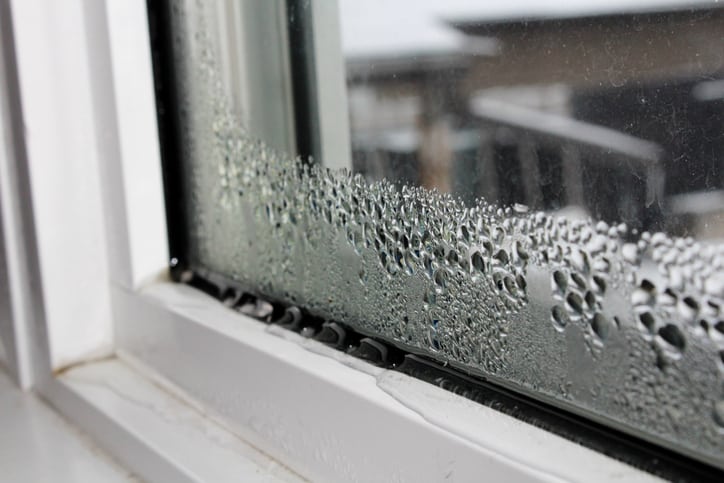
Excess moisture in your home can lead to several problems. It’s important to control your home’s humidity to avoid things like mold, mildew, and other water-related damage. Lowering the humidity in your home can lead to many benefits including keeping you comfortable, saving you money and discouraging the spread of harmful mold.
Why High Humidity in the Home is Bad
Rising humidity levels in your home can come from a number of different sources. Everyday activities such as cooking, showering, doing laundry, and washing dishes all contribute to the moisture in the air.
Poorly insulated walls, windows and doors create cool surfaces in the winter. Water can easily form on these surfaces and leak inside them causing damage to their structural integrity.
Your home’s humidity levels should be in the range of 30-50%. Anything higher than that is when moisture build-up becomes a problem.
How to Lower Humidity
Ventilation
One of the biggest ways to combat high humidity levels is to make sure your home is well ventilated. Areas like the kitchen and bathroom experience the most moisture so it’s imperative to have proper ventilation in those areas. Cracking a window while you’re showering or cooking or installing exhaust fans can greatly help lower humidity in the bathroom and kitchen.
If your attic isn’t properly ventilated, it can become a hotbed for humidity. Attic fans and vents can help keep the area dry. The use of fans throughout the house can help keep the air flowing and reduce humidity.
Shorter Showers
Something as simple as taking shorter and/or colder showers can contribute to lowering the humidity in your home. Longer and hotter showers produce more steam which can stick around and adds to the moisture build-up. Using a low flow shower head can also help lower humidity.
Limit the Amount of Plants Inside
Plants release moisture in the air and, if you have a lot of them around the house, it can accumulate pretty quickly. Be sure to limit the amount of plants in your house or switch between having some outside and inside. Also, don’t overwater them.
Maintain Your Gutters
Even though your gutters and downspouts are outside of your home, they can contribute to the humidity inside if not well maintained. Making sure your gutters are clean and effectively carrying water away from your home’s foundation is important when trying to lower humidity. Any excess water that builds up at the foundation can seep into your home and open up a whole slew of problems.
Repair or Replace Your Windows and Doors
Drafty, worn out windows and doors can cause cold moisture build up in your home and raise your humidity levels. Some fixes for windows might include adding a plastic film to the glass or weatherstripping and caulking the outside and inside of the windows. However, once your windows become drafty and moisture starts to build up in between the panes, you need to replace them.
As for doors, you can try weatherstripping the bottom to keep air from getting inside. Installing a storm door is also a great way to shield your entryway and add a layer of insulation so moisture doesn’t build up. Much like windows, however, once a door starts to fail, your best option is replacement. You can get a free quote for new exterior doors right here.
Use a Dehumidifier
This is as simple as it sounds. If you still find it difficult to control your home’s humidity, adding a dehumidifier can greatly improve your efforts.
Don’t Underestimate the Importance of Monitoring Humidity Levels
As we discussed, having high humidity levels in your home can be very detrimental to everyone living there and the house itself. From the growth and spreading of mold to damaging the structural integrity of your home, there are many reasons to lower humidity.







